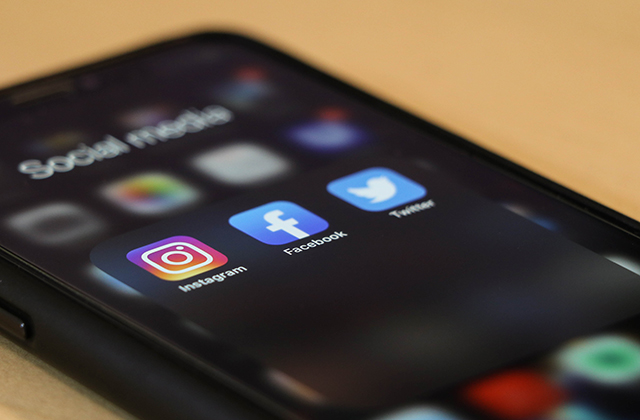In today’s digital age, social media has become an integral part of our lives. Social media platforms are no longer just a means of connecting with friends and family but have become a powerful tool for content creation. With billions of active users, social media platforms have the potential to reach a vast audience and generate a significant amount of engagement. In this article, we will explore why social media is your secret weapon for content creation and how you can use it to your advantage. Influencers in social media find themselves the need of a social media Sydney service.
Social media as a tool for content creation
Social media platforms like Facebook, Twitter, Instagram, and LinkedIn have evolved to become powerful tools for content creation. These platforms offer various features that enable users to create and share different types of content, including text, images, videos, and live streams. Moreover, these platforms have built-in audiences, making it easier for content creators to reach their target audience.
Social media platforms for content creation
Each social media platform has unique features and a different audience. Depending on your content type and target audience, you can choose the most appropriate platform to reach your audience. For instance, Instagram is an ideal platform for visual content, while LinkedIn is great for professional and B2B content. Facebook and Twitter are suitable for all types of content.
The benefits of using social media for content creation
Using social media for content creation has many benefits, including:
- Increased reach: Social media platforms have millions of active users, providing content creators with a vast audience to reach.
- Increased engagement: Social media platforms provide users with the ability to interact with content, leading to increased engagement.
- Low cost: Social media is a low-cost way to create and distribute content.
- User-generated content: Social media users can create and share content, making it easier for content creators to find and repurpose relevant content.
Tips for using social media for content creation
To get the most out of social media for content creation, consider the following tips:
- Identify your target audience and choose the appropriate platform to reach them.
- Create shareable content that resonates with your audience.
- Use multimedia, including images, videos, and infographics, to make your content more engaging.
- Incorporate trending topics and hashtags to increase visibility.
- Use analytics tools to monitor engagement and adjust your strategy accordingly.
How to use social media for content creation
To use social media effectively for content creation, you need to understand how the platforms work and how to create content that resonates with your target audience.
Identifying target audience
Before creating content, identify your target audience. Consider factors like age, gender, interests, and location. Use this information to create content that resonates with your audience.
Understanding social media algorithms
Social media algorithms determine what content appears on users’ feeds. Understanding these algorithms is crucial to getting your content seen by your target audience. Consider factors like posting.
Creating shareable content
To create shareable content, focus on producing high-quality, valuable content that resonates with your audience. Use attention-grabbing headlines and visuals to draw users in and make them want to share your content with their followers.
Incorporating multimedia into content
Visuals are an essential component of social media content. Incorporate images, videos, and other multimedia elements into your content to make it more engaging and shareable.
Using social media analytics for content creation
Social media analytics tools provide valuable insights into how your content is performing. Use these tools to monitor engagement and adjust your strategy accordingly. Identify your most popular content and use that as a basis for future content creation.
Best practices for social media content creation
Creating effective social media content requires a sound strategy and consistent effort. Consider the following best practices:
Consistency in posting
Posting content regularly is essential for building a following and keeping your audience engaged. Develop a posting schedule that works for you and stick to it.
Engaging with followers
Social media is a two-way communication channel. Engage with your followers by responding to comments, answering questions, and participating in conversations.
Collaboration with other creators
Collaborating with other content creators can help you reach new audiences and provide fresh perspectives for your content. Consider collaborating with other creators in your niche to expand your reach.
Experimenting with different content formats
Social media platforms offer a range of content formats, including text, images, videos, and live streams. Experiment with different formats to see what works best for your audience.
Challenges of social media content creation
Creating effective social media content is not without its challenges. Consider the following challenges:
Finding the right balance
Finding the right balance between promotional and informative content can be challenging. Aim to provide value to your audience while promoting your brand or products.
Overcoming algorithm changes
Social media algorithms change frequently, making it challenging to keep up. Stay informed about changes to algorithms and adjust your strategy accordingly.
Dealing with negative feedback
Negative feedback can be difficult to handle, but it’s essential to respond to criticism in a professional and constructive manner. Use negative feedback as an opportunity to improve your content and engagement strategy.
Conclusion
Social media is a powerful tool for content creation. By understanding the nuances of each platform and creating valuable, engaging content, you can reach a vast audience and build a loyal following. However, creating effective social media content requires a sound strategy, consistent effort, and the ability to adapt to changing trends and algorithms. Find out the powerful tool that you can use for your social media content.

